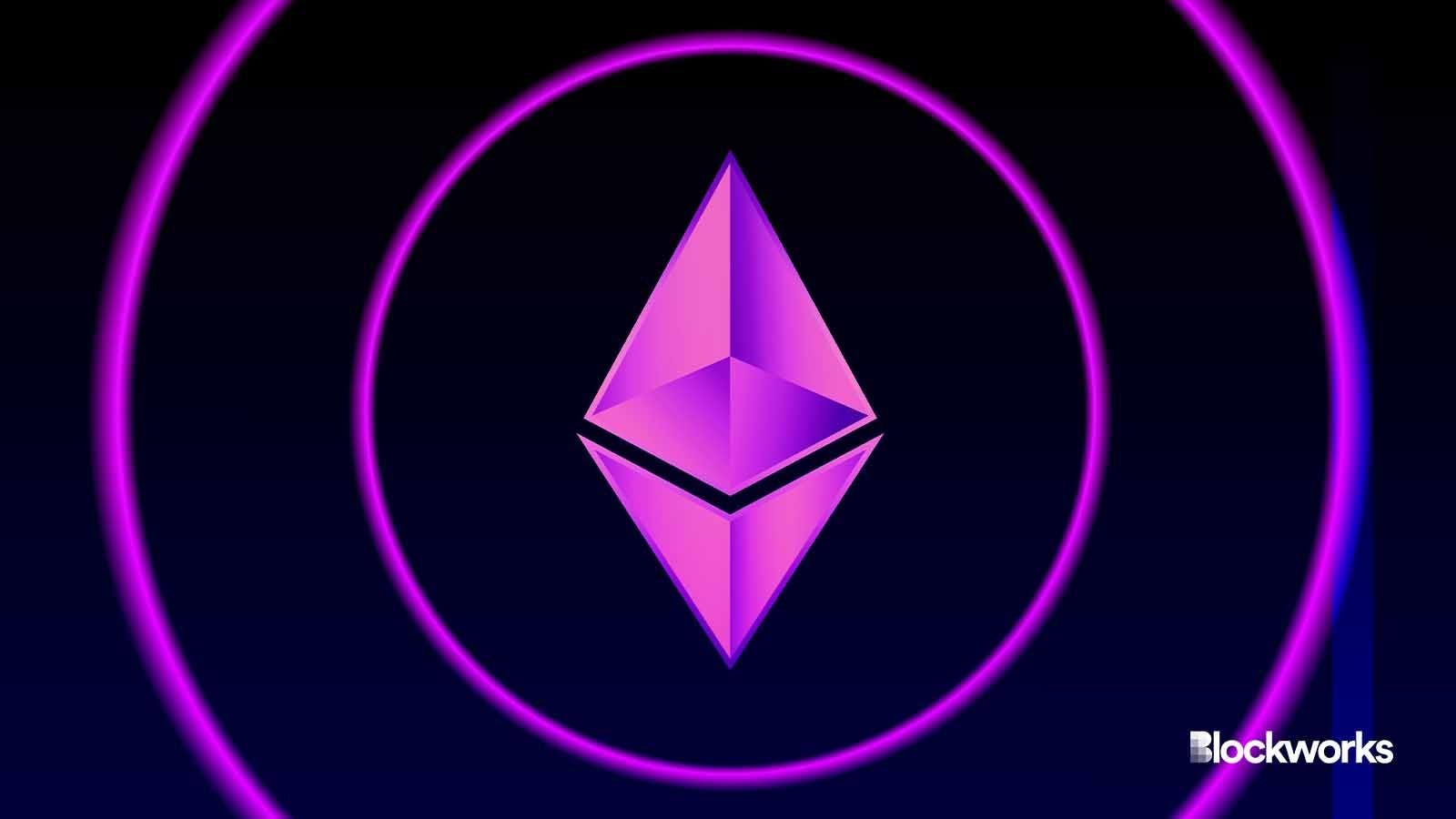Cheatsheet: Ethereum and L2s on track to beat Bitcoin for active addresses
Ethereum mainnet is slowly losing active addresses but its growing web of layer-2s are more than making up for it

Akif CUBUK/Shutterstock modified by Blockworks
This is Cheatsheet, a primer on what you should know about crypto today.
There are times in every market cycle where stuff just goes up because bitcoin isn’t going down.
Today is one of those days. Internet computer (ICP) is the best performing crypto at the top end of the table, gaining 20%.
The pupper with the woolly hat (WIF) is close behind with a 16% bounce. WIF spent most of the past week in the red after a healthy 30% retracement, and is still one of the worst performing top-100 cryptocurrencies over the past seven days.
Cryptocurrencies for alt blockchains Quant (QNT), NEAR and TON (TON) are close behind, with between 15% and 11% over the past day.
Ondo DAO (ONDO), the governance token for the treasury-focused DeFi protocol Flux Finance, is somewhere in the middle, having gained 13.4% across the past 24 hours and a healthy 86% over the past week.
Bitcoin (BTC) at $67,000 is otherwise up 2.1% to ether’s (ETH) 1.4%. eCash (XEC), ronin (RON) and stacks (STX) are the worst of the front-page, each slipping between 6.5% and 4.2% today as of 9:15 am ET.
On-chain mail
Polygon PoS has eclipsed Ethereum mainnet for monthly active unique addresses for the first time ever — but the latter’s layer-2s are together pulling in even more.
- Polygon PoS’s active unique addresses hit 6.24 million in February to Ethereum’s 5.89 million (three-month moving average).
- Ethereum plus its four major layer-2s’ average hit 13.73 million last month to Bitcoin’s 13.98 million.
- zkSync is the most popular Ethereum layer-2 with a moving average 27% higher than Arbitrum (3.12 million to 2.45 million).
Bitcoin has always had far more unique active addresses than Ethereum. Five years ago, in 2019, Bitcoin had nearly four times as many: 12.2 million to 3.2 million.
Ethereum mainnet’s unique active addresses more than doubled over the next two years. The network’s count has however been shrinking ever since it peaked at 7.57 million in June 2021, around the top of the previous bull market.
All growth has instead shifted to popular layer-2s Arbitrum, Optimism, Base and zkSync, which have altogether seen more active addresses per month than Ethereum mainnet since July last year.
Read more: It’s cheaper to swap on layer-2s than on Ethereum, Uniswap research finds
- If their current growth continues, there will soon be more active addresses on Ethereum and its layer-2s than Bitcoin.
- Polygon PoS is often mislabeled as a layer-2 network for Ethereum. It’s functionally its own layer-1 network with a unique set of validators.
- Bitcoin’s average monthly active addresses has grown only 13% in five years.
Crypto business
Bitcoin is quiet. But perhaps a little too quiet. Crypto stocks have inched higher but it doesn’t exactly feel like they’ve earned those gains.
- Almost every crypto stock opened higher this morning, led by miner Cipher Mining and bitcoin hoarder MicroStrategy, up 7.14% and 6.57% on Friday’s close as of 9:35 am ET.
- Griid is down 9.3% after a rollercoaster end to last week, which saw a sudden 40% pump only to lose it all within the same session.
- Cipher Mining is the best performing mining stock over the past month, now up 50%.
Bitcoin has decoupled from tech stocks over the past two weeks. BTC’s 30-day correlation with QQQ — which tracks the tech-heavy Nasdaq 100 — hit 68% on March 14, per TradingView. At the time, both QQQ and bitcoin hovered around their respective all-time highs.
Now, bitcoin is only 10% correlated with the cubes and could soon return to inverse territory. Bitcoin has often traded with negative correlation with tech stocks over the past year, after spending most of 2022 trading more in tandem.
Coinbase’s correlation with tech stocks hit its lowest point ever last month, sinking as low as -65%. It has since swung back up to 68% over the past week.
Read more: Coinbase announces offering of $1B in convertible notes
- COIN and bitcoin are meanwhile trading practically in tandem: 94% correlation, its highest point since January 2022.
- Coinbase is currently worth $63.69 billion — around $400 million less than Nintendo but slightly higher than Monster Beverage.
- All bitcoin mining stocks are worth $23.46 billion (about the same as Vodafone), up nearly three times since November.
On the ground
Get the news in your inbox. Explore Blockworks newsletters:
- The Breakdown: Decoding crypto and the markets. Daily.
- 0xResearch: Alpha in your inbox. Think like an analyst.






